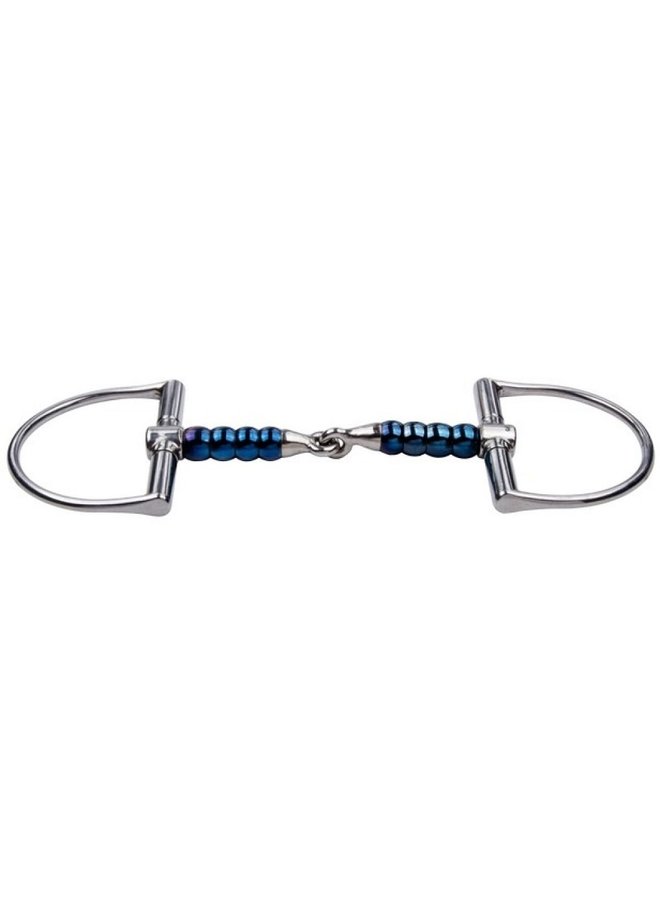Product description
Sweet Iron
- Sweet Iron bits are made of blue steel and release a sweet-tasting surface rust through contact with saliva, which stimulates the horse's saliva production in a natural way. This sweet surface rust will cause the horse to foam more and accept the bit better.
- When a Sweet Iron bit is temporarily not used, an orange-brown rust layer can form on the mouthpiece. This can be easily removed by wiping the bit with a damp cloth.
D-Snaffle Bit
- As the name implies, the side pieces of a D-snaffle have the shape of a D and therefore cannot be easily pulled through the mouth.
- Because of this D shape, more pressure is obtained on the horse's cheeks, which makes maneuverability easier.
- This makes the D-snaffle a nice bit for teaching young horses.
- Depending on the type, thickness and material, a D-bit gets a sharper or softer effect.
Single Jointed
- A single jointed bit has a hinge point in the middle that puts pressure on the lips, layers and sides of the tongue. A single jointed bit squeezes the tongue slightly under pressure and puts less pressure on the tongue.
- A single jointed bit rises slightly in the middle and can sting the palate. In this case is it better to choose a double-jointed or straight mouthpiece.
- A single jointed bit is a good basic bit, suitable for many horses and riders.
Copper & Cherry Roller
- The mouthpiece of this bit features a series of rollers that encourage the horse to play with the bit, creating relaxation in the jaws.
- The movement of these rollers promote the production of saliva, which makes it easier to accept the bit and the horse is less suitable for grabbing the bit.
- Due to the more rounded shape of the mouthpiece, a cherry roller has a friendlier effect than the Magenis bit.
Reviews
Recent articles

Trust Equestrian
Sweet Iron d-bit cherry roller
€139,99


